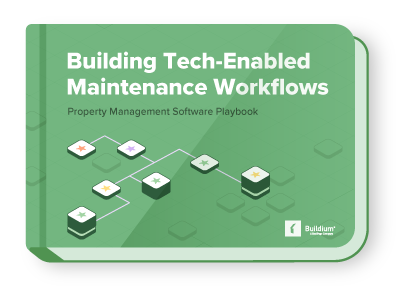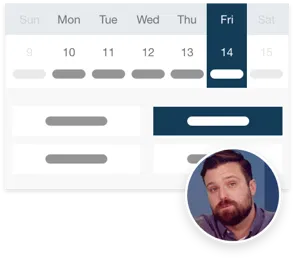As a residential property manager, you juggle evaluating properties, managing tenants, and overseeing property operations. While daily activities keep you busy, it’s also important to grasp how your properties perform financially. One key metric to keep in mind is the capitalization rate (cap rate).
By understanding cap rate, you can make better decisions about the properties you manage—whether it’s deciding to raise rents, make improvements, or invest in new acquisitions.
Defining Capitalization Rate
In real estate, the capitalization rate, or cap rate, is a key metric used to gauge the potential return on investment for a property. Essentially, it shows the rate of return an investor can expect from a property based on its Net Operating Income (NOI) and its current market value or purchase price.
The cap rate is calculated using the following formula:
Cap Rate = (Net Operating Income) / (Current Market Value or Purchase Price)
Net Operating Income (NOI): This is the annual income a property generates after subtracting all operating expenses, such as maintenance, insurance, property taxes, and management fees. It does not include mortgage payments or financing costs.
Current Market Value: This is the current value or market price of the property, determined by an appraisal or the property’s recent purchase price.
For example, if a property generates $40,000 in annual NOI and is valued at $500,000, the cap rate would be:
Cap Rate = $40,000 / $500,000 = 0.08 or 8%
This means the property provides an 8% return on its current market value each year, based on the NOI.
Importance of Cap Rate in Residential Property Management
As a property manager, understanding cap rate is invaluable for assessing a property’s financial health. It allows you to measure how well a property performs relative to its value and helps guide choices about holding, selling, or buying more properties.
How Cap Rate Helps You Evaluate Property Performance
Cap rate gives you a quick snapshot of a property’s profitability. If a property generates a higher NOI relative to its market value, it likely has a higher cap rate, indicating a better return on investment. If the cap rate is low, the property might not be as profitable, prompting you to consider strategies to boost its NOI, such as raising rents, cutting costs, or improving occupancy rates.
Cap Rate in Buying and Selling Decisions
When managing a property portfolio, cap rate can help guide decisions about buying or selling a property. For example:
Buying: If you’re eyeing a new property, a higher Cap Rate often points to a better return on investment, assuming other factors such as location and property condition are also favorable.
Selling: If you’re looking to sell a property, knowing the cap rate can help you set an appropriate asking price that reflects the property’s performance.
Example: How Cap Rate Affects Daily Operations
Imagine you’re managing a property and notice its cap rate is on the lower end. This might indicate that the property isn’t generating as much return on investment as it could. As a property manager, this could prompt you to take action—perhaps by suggesting property improvements to increase the NOI or by advising the owner to consider selling the property if it’s underperforming. On the other hand, a property with a high cap rate might indicate a healthy investment, leading you to continue managing it as-is or possibly invest in similar properties.
While cap rate is useful, it should be used alongside other financial metrics such as cash-on-cash return to get a more comprehensive understanding of a property’s financial performance.
How to Calculate Cap Rate
Calculating cap rate is straightforward and can be done using a few simple steps. Let’s break it down:
Formula for cap rate:
Cap Rate = (Net Operating Income) / (Current Market Value or Purchase Price)
Step-by-Step Example:
Let’s go through an example to see how cap rate works in action:
Net Operating Income (NOI): For this example, let’s say the property generates $40,000 in NOI each year.
Market Value or Purchase Price: The market value of the property is $500,000.
Using the formula:
Cap Rate = $40,000 / $500,000 = 0.08 or 8%
This means the property has an 8% return on investment based on its annual NOI and current market value.
When to Use Cap Rate
There are three main scenarios when cap rate is most useful:
- Evaluating Properties Before Purchase: If you’re looking to buy a new property, cap rate helps you determine if the property offers a reasonable return based on its price and income potential.
- Setting an Asking Price: If you’re managing a property that you want to sell, understanding the cap rate helps you determine a fair asking price based on its performance.
- Tracking Performance Over Time: By calculating cap rate regularly, you can track whether the property’s profitability is improving or declining over time.
Factors Affecting Cap Rate
Several factors can influence a property’s cap rate, and it’s important to consider these when evaluating a property:
Location
Location plays a huge role in determining cap rate. Properties in high-demand areas or prime locations tend to have lower cap rates because they are seen as safer, lower-risk investments. On the other hand, properties in less desirable areas may have higher cap rates due to increased risk.
Property Condition
A well-maintained property is likely to generate higher rental income, which could result in a higher NOI and a more favorable cap rate. Conversely, a property in poor condition may require more maintenance and have lower rents, leading to a lower cap rate.
Market Trends
Local market trends, such as supply and demand, economic conditions, and interest rates, can all affect cap rates. For example, in a booming real estate market, property values tend to rise, which may reduce cap rate if the property’s income remains constant.
Interest Rates
When interest rates are high, it becomes more expensive to borrow money, which could reduce the demand for properties and, in turn, lower their market values. This may lead to an increase in cap rates as buyers demand a higher return on investment to offset higher borrowing costs.
Frequently Asked Questions
What is Cap Rate?
Cap rate, or capitalization rate, is a metric used in real estate to evaluate the profitability of an investment property. It is calculated by dividing the property’s Net Operating Income (NOI) by its market value or purchase price, and is expressed as a percentage.
How do I calculate Cap Rate?
To calculate the cap rate, use the formula:
Cap Rate = (Net Operating Income) / (Market Value or Purchase Price)
For example, if your property generates $40,000 in annual NOI and has a market value of $500,000, the cap rate would be:
Cap Rate = $40,000 / $500,000 = 0.08 or 8%
Why is Cap Rate important?
Cap rate is important because it helps investors assess the potential return on investment for a property. It can be used to compare different properties, set asking prices, and track performance over time. It also provides insights into how factors such as location, property condition, and market trends can impact a property’s profitability.
Read more on
